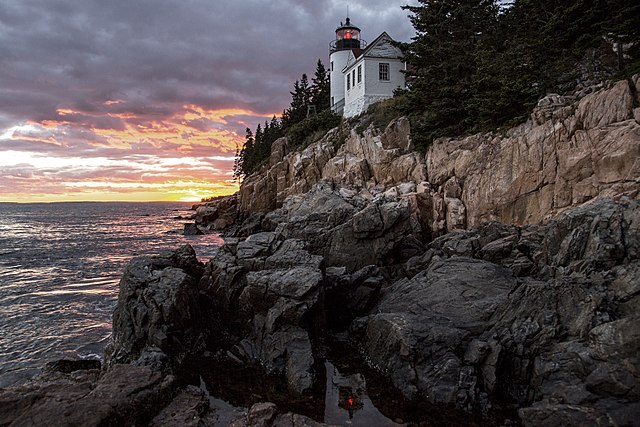Acadia National Park comprises several mountains and several islands in the middle of the Maine coast, southwest of Bar Harbor.
This stunning region is a must for you to visit if you like a rich natural landscape with a variety of terrains.
If you’d like to learn more about this national park before making the trip, here are a few intriguing facts to get you started.
1. The National Park Service had its 100th anniversary in 2016.
The same is true for Acadia, after it was established as a national monument by President Wilson.
It was called the Sieur de Monts National Monument at the time.

2. President Wilson signed a bill that led to the creation of Lafayette National Park in 1919.
This happened after Marquis de Lafayette, a French man who became a supporter of the American Revolution.
It wasn’t changed to Acadia National Park until 1929.
3. This is the fifth smallest national park when it comes to land area.
However, it’s in the top ten for most visited national parks as of 2016.
4. Acadia National Park contains 26 mountains.
And within those mountains, we have Flying Mountain being the shortest (284 ft.) and Cadillac Mountain being the highest (1,530 ft.).
5. There are 49,000 acres of land in the Acadia National Park.
13,000 of those acres are in conservation easements for private lands and 31,000 acres are on Mount Desert Island.
6. President Obama and his family went on a vacation at Acadia in 2010.
He is the first sitting president to visit the park, since Presidents Taft, Harrison, and Arthur went to this area before it was named a national park.
President Obama may have gotten the idea to take a vacation there after the ABC News filmmaker Ken Burns showed the President his “The National Parks: America’s Best Idea”.
7. Acadia National Park is the first of its kind to be supported entirely by private donations.
The President of Harvard, Charles W. Eliot, and George B. Dorr, worked to create the national park in 1916.
John D. Rockefeller bequest 11,000 acres to Acadia and he also built more than 40 miles of their carriage roads.
8. There are over 40 species mammals at Acadia National Park.
This includes moose, black bears, coyotes, beavers, seals, dolphins, and whales.
There also are seabirds, raptors such as the peregrine falcon, songbirds, herons, salamanders, toads, and frogs, among other types of animals that you may encounter on your visit.
9. There are over a thousand plant species at this national park.
This includes pine, beech, ash, maple, birch, and aspen trees.
Some other plants you’re likely to see include juniper, raspberry, and rose shrubs, as well as water-lily, blueberry, and strawberry.
10. Hiking is an excellent activity for you to do at this park.
There are 120 miles of trails in Acadia. Some of the more popular are the Jordan Pond Full Loop Trail, Cadillac North Ridge Trail, Beehive Loop Trail, and Gorham Mountain Loop Trail.
They vary in difficulty level and types of terrain.
11. The weather in this park can change quickly.
For this reason, it’s best to visit during July and August when it gets up to 70+ degrees Fahrenheit.
It is busiest at that time of year so it may be ideal to in September or early October.
The park is amazing in winter, if you’re up to facing the freezing temperatures.
12. The Wabanaki have lived on the lands that are now Acadia National Park for the past 12,000 years.
They are comprised of four tribes (the Micmac, Penobscot, Passamaquoddy, and Maliseet).
These tribes currently have their own reservations and government headquarters within their Maine territory.
